Related Research Articles

Aerodynamics, from Greek ἀήρ aero (air) + δυναμική (dynamics), is the study of motion of air, particularly as interaction with a solid object, such as an airplane wing. It is a sub-field of fluid dynamics and gas dynamics, and many aspects of aerodynamics theory are common to these fields. The term aerodynamics is often used synonymously with gas dynamics, the difference being that "gas dynamics" applies to the study of the motion of all gases, and is not limited to air. The formal study of aerodynamics began in the modern sense in the eighteenth century, although observations of fundamental concepts such as aerodynamic drag were recorded much earlier. Most of the early efforts in aerodynamics were directed toward achieving heavier-than-air flight, which was first demonstrated by Otto Lilienthal in 1891. Since then, the use of aerodynamics through mathematical analysis, empirical approximations, wind tunnel experimentation, and computer simulations has formed a rational basis for the development of heavier-than-air flight and a number of other technologies. Recent work in aerodynamics has focused on issues related to compressible flow, turbulence, and boundary layers and has become increasingly computational in nature.

The Ames Research Center (ARC), also known as NASA Ames, is a major NASA research center at Moffett Federal Airfield in California's Silicon Valley. It was founded in 1939 as the second National Advisory Committee for Aeronautics (NACA) laboratory. That agency was dissolved and its assets and personnel transferred to the newly created National Aeronautics and Space Administration (NASA) on October 1, 1958. NASA Ames is named in honor of Joseph Sweetman Ames, a physicist and one of the founding members of NACA. At last estimate NASA Ames has over US$3 billion in capital equipment, 2,300 research personnel and a US$860 million annual budget.
Compressible flow is the branch of fluid mechanics that deals with flows having significant changes in fluid density. While all flows are compressible, flows are usually treated as being incompressible when the Mach number is less than 0.3. The study of compressible flow is relevant to high-speed aircraft, jet engines, rocket motors, high-speed entry into a planetary atmosphere, gas pipelines, commercial applications such as abrasive blasting, and many other fields.
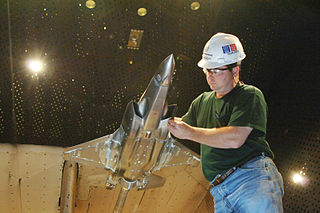
Arnold Engineering Development Complex (AEDC), Arnold Engineering Development Center before July 2012, located at Arnold Air Force Base, Tennessee is a ground-based flight test facility operated by the Air Force Test Center.
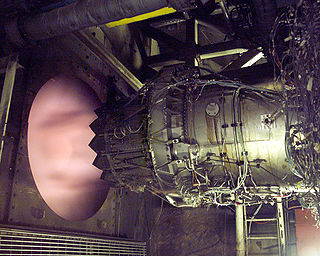
Arnold Air Force Base is a United States Air Force base located in Coffee and Franklin counties, Tennessee, adjacent to the city of Tullahoma. It is named for General Henry "Hap" Arnold, the father of the U.S. Air Force.
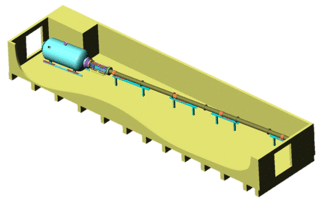
A Ludwieg tube is a cheap and efficient way of producing supersonic flow. Mach numbers up to 4 in air are easily obtained without any additional heating of the flow. With heating, Mach numbers of up to 11 can be reached.

A hypersonic wind tunnel is designed to generate a hypersonic flow field in the working section, thus simulating the typical flow features of this flow regime - including compression shocks and pronounced boundary layer effects, entropy layer and viscous interaction zones and most importantly high total temperatures of the flow. The speed of these tunnels vary from Mach 5 to 15. The power requirement of a wind tunnel increases with the cross section, the flow density and is directly proportional to the third power of the test velocity. Hence installation of a continuous, closed circuit wind tunnel remains a costly affair. The first continuous Mach 7-10 wind tunnel with 1x1 m test section was planned at Kochel am See, Germany during WW II and finally put into operation as 'Tunnel A' in the late 1950s at AEDC Tullahoma, TN, USA for an installed power of 57 MW. In view of these high facility demands, also intermittently operated experimental facilities like blow-down wind tunnels are designed and installed to simulate the hypersonic flow. A hypersonic wind tunnel comprises in flow direction the main components: heater/cooler arrangements, dryer, convergent/divergent nozzle, test section, second throat and diffuser. A blow-down wind tunnel has a low vacuum reservoir at the back end, while a continuously operated, closed circuit wind tunnel has a high power compressor installation instead. Since the temperature drops with the expanding flow, the air inside the test section has the chance of becoming liquefied. For that reason, preheating is particularly critical.

A supersonic wind tunnel is a wind tunnel that produces supersonic speeds (1.2<M<5) The Mach number and flow are determined by the nozzle geometry. The Reynolds number is varied by changing the density level. Therefore, a high pressure ratio is required. Apart from that, condensation of moisture or even gas liquefaction can occur if the static temperature becomes cold enough. This means that a supersonic wind tunnel usually needs a drying or a pre-heating facility. A supersonic wind tunnel has a large power demand, so most are designed for intermittent instead of continuous operation.
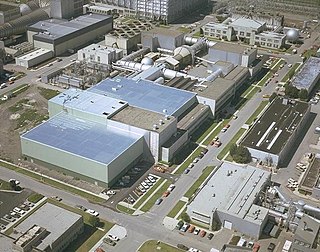
The Unitary Plan Wind Tunnel, located at the NASA Ames Research Center in Moffett Federal Airfield, Mountain View, California, United States, is a research facility used extensively to design and test new generations of aircraft, both commercial and military, as well as NASA space vehicles, including the Space Shuttle. The facility was completed in 1955 and is one of five facilities created after the 1949 Unitary Wind Tunnel Plan Act supporting aeronautics research.
A Trisonic Wind Tunnel (TWT) is a wind tunnel so named because it is capable of testing in three speed regimes – subsonic, transonic, and supersonic. The earliest known trisonic wind tunnel was dated to 1950 and was located in El Segundo, California before it closed in 2007. Other trisonic wind tunnels currently in operation are those located at NASA's Marshall Space Flight Center and the French-German Research Institute of Saint-Louis.
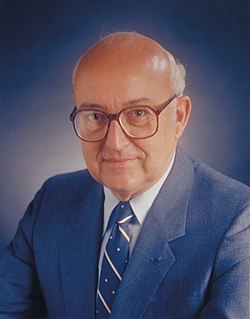
Clarence A. "Sy" Syvertson is the retired Center Director of the Ames Research Center of the National Aeronautics and Space Administration, located at Moffett Field, California.

The Eight-Foot High Speed Tunnel, also known as Eight-Foot Transonic Tunnel, was a wind tunnel located in Building 641 of NASA's Langley Research Center in Hampton, Virginia. It was a National Historic Landmark.
The Aeronautical/Astronautical Research Laboratory (AARL) is an aerospace engineering research facility operated by Ohio State University. It is the principal research facility of the College of Engineering's Department of Aerospace and Astronautical Engineering. It is located on the grounds of Ohio State University Airport, in Columbus, Ohio.

AEDC Aerodynamic and Propulsion Test Unit (APTU) is a blowdown hypersonic wind tunnel driven by a combustion air heater (CAH). The facility is owned by the United States Air Force and operated by Aerospace Testing Alliance.

AEDC Hypervelocity Wind Tunnel 9 is a hypersonic wind tunnel owned by the United States Air Force and operated by National Aerospace Solutions The facility can generate high Mach numbers and high Reynolds for hypersonic ground testing and the validation of computational simulations for the Air Force and Department of Defense.

The High-Enthalpy Arc-Heated Facilities at Arnold Engineering Development Complex provide aerothermal ground test simulations of hypersonic flight over a wide range of velocities and pressure altitudes in support of materials and structures development. The facility is composed of three Arc Heaters: HEAT-H1, HEAT-H2, and Heat-H3 which can heat air up to 13,000 degrees Rankine through a controlled high voltage direct current electric arc discharge. The test unit is owned by the United States Air Force and operated by National Aerospace Solutions.
The von Karman Gas Dynamics Facility at Arnold Engineering Development Complex, Arnold Air Force Base, Tennessee, provide aerothermal ground test simulations of hypersonic flight over a wide range of velocities and pressure altitudes. The facility consists of three Hypersonic wind tunnels: Tunnel A, B, and C. The wind tunnels can be run for several hours at a time thanks to a 92,500 horsepower air compressor plant system. The test unit is owned by the United States Air Force and operated by National Aerospace Solutions.
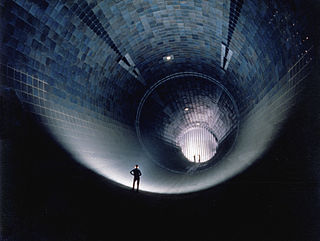
The Propulsion Wind Tunnel Facility, located at Arnold Engineering Development Complex, Arnold Air Force Base, Tennessee, holds three wind tunnels: the 16-foot transonic (16T), 16-foot supersonic (16S), and the aerodynamic 4-foot transonic (4T) tunnels. The facility is devoted to aerodynamic and propulsion integration testing of large-scale aircraft models. The tunnels are powered by a large compressor plant which allows the wind tunnels to run for extended periods of time. The test unit is owned by the United States Air Force and operated by Aerospace Testing Alliance.

Standard wind tunnel models, also known as reference models, calibration models or test check-standards are objects of relatively simple and precisely defined shapes, having known aerodynamic characteristics, that are tested in wind tunnels. Standard models are used in order to verify, by comparison of wind tunnel test results with previously published results, the complete measurement chain in a wind tunnel, including wind tunnel structure, quality of the airstream, model positioning, transducers and force balances, data acquisition system and data reduction software.

The MARHy Hypersonic low density Wind Tunnel, located at the ICARE Laboratory in Orléans, France, is a research facility used extensively for fundamental and applied research of fluid dynamic phenomena in rarefied compressible flows. Its name is an acronym for Mach Adaptable Rarefied Hypersonic and the wind tunnel is recorded under this name under the European portal MERIL.
References
- ↑ < "Supersonic Wind Tunnel" . Retrieved 2007-08-13.
- ↑ < "Arc-Heater" . Retrieved 2007-08-13.